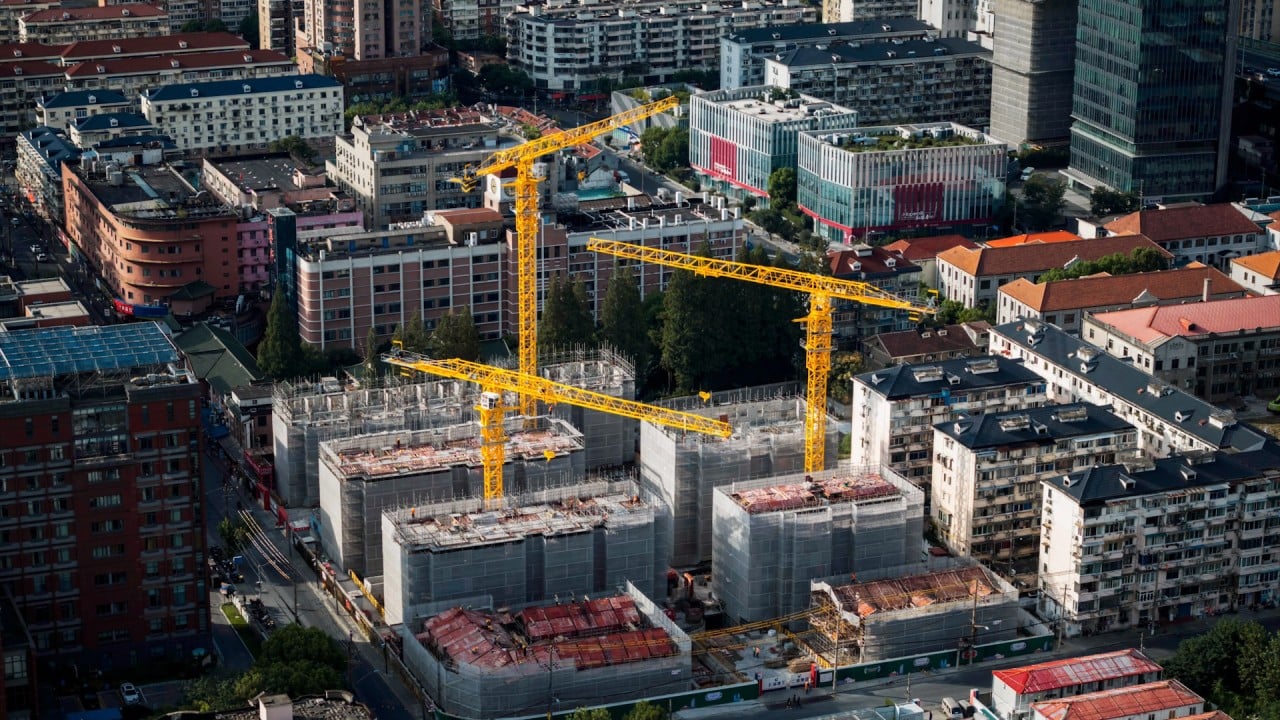
02:09
China surprises market by keeping mortgage rate unchanged amid ongoing property crisis
China surprisingly holds mortgage rate, underwhelming move raises easing outlook concerns
- China’s one-year loan prime rate (LPR) was cut from 3.55 to 3.45 per cent, but the five-year LPR remained unchanged at 4.2 per cent
- Analysts have warned that a real impact on housing demand and the economy would require more than just rate cuts
China refrained from slashing its widely watched mortgage rate on Monday, in an unexpected move that raised market concerns over how the world’s second-largest economy will tackle the ongoing property crisis and also restore homebuyer confidence.
The five-year loan prime rate (LPR) – which is a reference rate for mortgages – was left unchanged at 4.2 per cent at the August fixing, the People’s Bank of China (PBOC) said.
The central bank, though, only cut the one-year loan prime rate – the medium-term lending benchmark for corporate loans – from 3.55 to 3.45 per cent.
China’s stock market fell and the yuan weakened against the US dollar after the surprise move. The yuan deteriorated by as much as 0.4 per cent to 7.3094 per US dollar.
The rate cut of existing mortgage loans is already in the pipeline
The benchmark Shanghai Composite Index fell by as much as 1.2 per cent, while Shenzhen’s key market gauge declined by 1.3 per cent. Hong Kong’s Hang Seng Index, meanwhile, retraced by 1.8 per cent.
Analysts said the cut was not enough and that more targeted and robust policies were required to have a tangible impact.
Wen Bin, chief economist at China Minsheng Bank, believed the move is set to provide room for Beijing’s policymakers to adjust mortgage policies.
“The rate cut of existing mortgage loans is already in the pipeline,” Wen said.
Hopes for a stimulus-led turnaround in economic activity largely depend on the prospect of greater fiscal support
In a key de-risking meeting on Friday, China’s central bank, as well as banking and securities regulators, pledged to intensify policy coordination to address risks of local government debt and optimise credit policy for the real estate sector.
“The underwhelming LPR announcement strengthens our view that the PBOC is unlikely to embrace the much larger rate cuts that would be required to revive credit demand,” said Julian Evans-Pritchard and Zichun Huang, China economists at Capital Economics.
“Hopes for a stimulus-led turnaround in economic activity largely depend on the prospect of greater fiscal support.”
No turnaround, jobless rates halted: 7 takeaways from China’s July economic data
The LPR has been considered China’s de facto benchmark funding cost since 2019. The rate is decided by a group of 18 banks and is reported in the form of a spread over the interest rate of the central bank’s medium-term lending facility.
Top leaders should introduce supportive policies with urgency, including the relaxation of markets in the biggest cities
“The current situation would need cuts by 50 basis points or more, or other measures such as cuts to the reserve requirement ratio, extra government spending and other tangible moves to boost growth,” said Xu Tianchen, an economist with the Economist Intelligence Unit.
“Top leaders should introduce supportive policies with urgency, including the relaxation of markets in the biggest cities.
“Better still, they should commit additional liquidity support to large distressed developers to avoid confidence tanking further.”
The world’s second-largest economy confirmed weak economic data for July earlier, with investor and consumer confidence faltering.
Property investment fell by 8.5 per cent, year on year, from January to July, after dropping by 7.9 per cent in the first half of the year, marking the lowest growth rate this year.
UBS economists also said last week that it was necessary to roll out more potent and swift relaxation of real estate policies, which are crucial for stabilising real estate activities.
Rate cuts would restore confidence in the property market from the demand side, but China’s monetary policy needs to be more powerful and targeted, said Bruce Pang, chief economist at global real estate services company JLL.
“Monetary policy alone cannot effectively and efficiently solve the triple whammy on the Chinese economy – near-term cyclical disruptions, medium-term structural issues and longer-term mega-trends,” said Pang.

